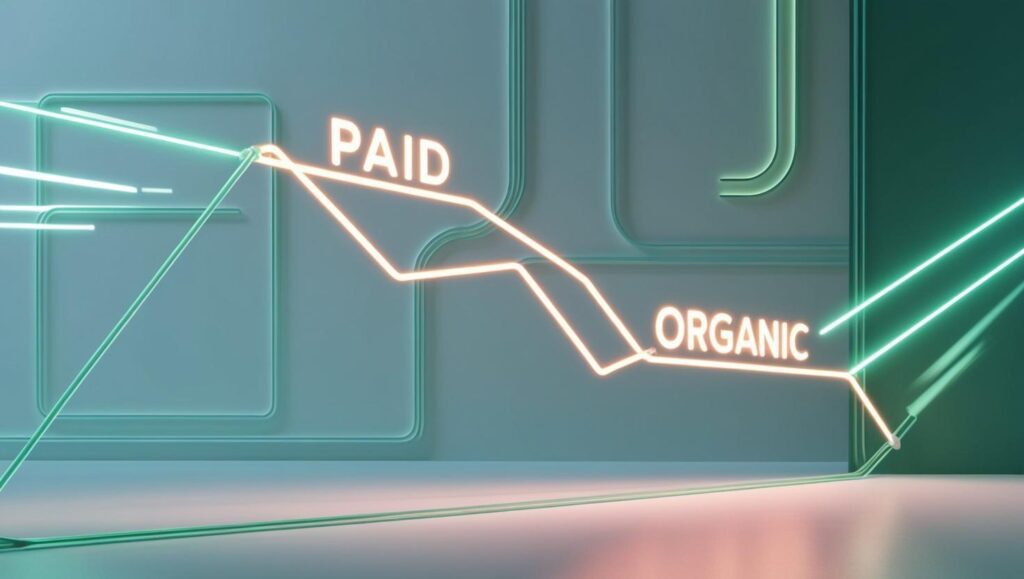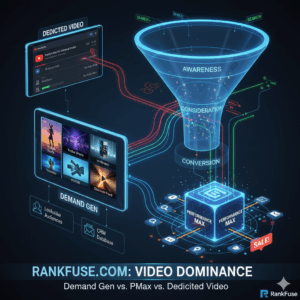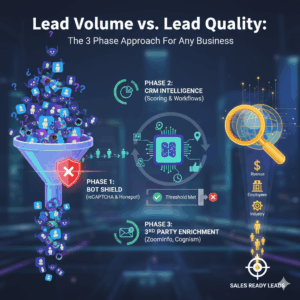The Impact of AI Overviews on Search CTR Trends
How Google's AI-generated overviews are affecting organic and paid click-through rates.
Google's introduction of AI Overviews (AIO) in search results has significantly changed user behavior and click patterns. This dashboard analyzes 12 months of CTR data (January 2024 to January 2025), comparing organic and paid search performance when AI Overviews are shown versus when they are not displayed. The data reveals compelling evidence that AI-generated content is contributing to a decline in both organic and paid CTRs, reinforcing the growing concern about "zero-click" searches.
Key Finding: The presence of AI Overviews in search results causes a dramatic reduction in click-through rates across both organic and paid listings. This analysis quantifies the impact and explores the trends over the past year.
Search CTR Trends: Key Metrics Overview
Below are the calculated average click-through rates across all data categories over the past 12 months. These figures highlight the substantial difference in performance between searches with and without AI Overviews.
When AI Overviews are displayed in search results, organic CTR decreases by approximately 67.8% compared to when they're not shown. Similarly, paid CTR sees a reduction of 58.0%. This dramatic impact underscores how AI-generated content is satisfying user queries directly in the SERP, significantly reducing the likelihood of users clicking through to websites.
Monthly CTR Trends (Jan 2024 - Jan 2025)
This line chart displays the monthly progression of all four CTR categories over the past year. The visualization allows us to identify patterns and the growing gap between AIO and non-AIO results.
The data reveals several critical patterns:
- Organic CTR, when AI Overviews are displayed, has been steadily declining throughout 2024, starting at 1.41% in January 2024 and falling to 0.64% by January 2025, a 54.6% decrease.
- Paid CTR without AI Overviews has fluctuated but shows an overall downward trend from 23.07% to 17.24%, a 25.3% reduction.
- The gap between organic CTR with and without AIO has widened in recent months, suggesting the increasing effectiveness of AI Overviews in answering user queries without requiring clicks.
CTR Comparison by Category
The following chart compares the average CTR for each category, making it easier to visualize the impact of AI Overviews on both organic and paid search performance.
While both organic and paid results experience significant CTR reductions when AI Overviews are displayed, the proportional impact on organic CTR (67.8% decrease) is greater than on paid CTR (58.0% decrease). This indicates that organic listings are more severely affected by the presence of AI-generated content in search results, potentially because paid ads still maintain some visual prominence and targeting advantages that partially mitigate the AIO effect.
Monthly CTR Trends Data Table
Below is the complete table of CTR data by month, allowing for a detailed examination of performance across all categories throughout the analyzed period.
| Month | Organic CTR (AIO Not Shown) |
Organic CTR (AIO Shown) |
Paid CTR (AIO Not Shown) |
Paid CTR (AIO Shown) |
|---|
The table reveals considerable month-to-month volatility, particularly in organic CTR when AIO is not shown. For instance, there was a dramatic jump from 2.03% in July 2024 to 4.71% in December 2024 before settling at 3.97% in January 2025.
This volatility suggests that other factors—potentially including algorithm updates, seasonal trends, or changes in Google's AI Overview implementation—may be influencing CTR alongside the AIO effect. The data shows that despite this volatility, the overall trend confirms the negative impact of AI Overviews on click-through behavior.
The Impact of AI Overviews on CTR Reduction
This visualization quantifies the percentage decrease in CTR when AI Overviews are shown compared to when they are not, highlighting the relative impact on organic versus paid results.
Insight: The Zero-Click Effect
The substantial CTR reductions—67.8% for organic and 58.0% for paid—represent concrete evidence of the "zero-click" phenomenon being accelerated by AI-generated content.
When users receive satisfactory information directly in search results via AI Overviews, they're significantly less likely to click through to any result, whether organic or paid. This has profound implications for websites that rely on search traffic, as achieving visibility in search results no longer guarantees user engagement as it once did.
Tracking the Effectiveness of AI Overviews
One way to measure how effectively AI Overviews are answering user queries is to look at the ratio between CTR with AIO shown versus not shown over time. A decreasing ratio would indicate AI Overviews are becoming more effective at satisfying queries directly in the SERP.
The data shows a clear relationship between AI Overviews and click behavior. For organic results, the CTR with AIO shown (0.64% in January 2025) is significantly lower than without AIO (3.97% in January 2025). Similarly for paid results, CTR with AIO shown (6.56%) is much lower than without AIO (17.24%).
This demonstrates that when AI Overviews satisfy user queries directly in search results, users are less likely to click through to websites. The ratio of organic CTR with AIO shown to organic CTR without AIO has decreased from 0.53 (Jan 2024) to 0.16 (Jan 2025), indicating that the presence of AI Overviews is having an increasingly suppressive effect on click-through behavior over time.
Understanding the Ratio Line Chart Calculation
The ratio chart compares the relationship between "AIO Shown" and "AIO Not Shown" CTRs over time by using a simple mathematical division:
For each month:
Organic Ratio = (Organic CTR with AIO) / (Organic CTR without AIO)
Paid Ratio = (Paid CTR with AIO) / (Paid CTR without AIO)
For example, in January 2024:
- Organic Ratio = 1.41% ÷ 2.68% = 0.53
- Paid Ratio = 8.76% ÷ 23.07% = 0.38
By January 2025:
- Organic Ratio = 0.64% ÷ 3.97% = 0.16
- Paid Ratio = 6.56% ÷ 17.24% = 0.38
Important Limitations
This analysis has limitations without search volume data or other SERP factors. Here's what's missing and how it affects interpretation:
- No Search Volume Context: We can't tell if the CTR differences represent equal volumes of searches. If "AIO Shown" scenarios occur for 10% of searches vs. 90% for "AIO Not Shown," the impact would be weighted differently.
- No Query Intent Differentiation: AI Overviews may appear more frequently for specific query types (informational vs. navigational vs. transactional), which naturally have different CTR behaviors.
- No Positional Data: We don't know if the organic rankings were consistent between AIO/non-AIO scenarios. Position #1 naturally has higher CTR than position #5.
- No SERP Feature Context: Other elements like featured snippets, knowledge panels, or shopping results could be present in different proportions between the two scenarios.
- No Competitive Landscape Information: Different sets of competitors may appear in AIO vs non-AIO results.
What the Ratio Actually Tells Us
Given these limitations, the ratio simply shows the proportional relationship between two sets of CTR data over time. The decreasing organic ratio (from 0.53 to 0.16) indicates that the gap between AIO and non-AIO CTRs is widening, but without additional context, we can't definitively attribute this solely to increasing AI Overview effectiveness.
The more accurate interpretation is that this chart shows how the relative performance gap between these two scenarios has changed over time, which could be influenced by a combination of factors, including:
- AI Overview improvements
- Hanging user behavior
- Algorithm updates
- Shifts in which query types trigger AI Overviews.
For a more complete analysis, we would need search volume data, query categorization, and additional SERP metrics to properly weight and contextualize these CTR differences.
Strategic Implications of How AI Overviews Impact Search CTR
The data we analyzed provides some evidence that AI Overviews are significantly transforming search behavior by reducing click-through rates across both organic and paid results. This trend has accelerated throughout 2024 and into 2025, with the latest data showing some of the most dramatic impacts yet.
Key Takeaway: The consistent and substantial reduction in CTRs when AI Overviews are present confirms that search is evolving toward a model where many queries are resolved directly in the SERP, without requiring users to click through to websites. This "zero-click" reality necessitates strategic adaptation from both SEO and PPC professionals.
For businesses and marketers, these findings suggest the need for strategic pivots
- Focusing on queries less likely to trigger AI Overviews
- Creating content that goes beyond what AI can summarize
- Developing strong brand recognition that encourages direct navigation
- Diversifying traffic sources beyond organic search
As AI continues to reshape the search landscape, adaptability will be key to maintaining visibility and engagement in an increasingly zero-click environment.




